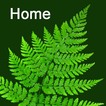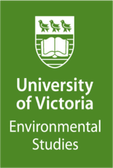Resources for Educators
Below are some resources for teaching students about the Central Coast and its biodiversity.
|
Dock Scavenger Hunt
This activity will get students peering over the sides of the Hakai Institute docks (or other docks, floats, or similar Central Coast habitats) in search of a variety of intertidal species. Students will need identification resources on-hand for this activity. Please remind students to be gentle with the animals during this activity! Scavenger hunt created by Nathaniel Glickman, Martina Beck, Rosie Child, and the students of ES 470 2013. |
Includes species names and checklist.
| ||||||
|
Species Naming
This painting depicts some of the marine species found in Central Coast waters. Students are encouraged to name these species in their traditional language, and could share these results with others in the class with different traditional languages. Painting by Amanda Cook. |
| ||||||
Sierra Club BC Education Resources and Tools
"Sierra Club BC’s Education Program has developed classroom programs that reflect our current campaigns. In addition, we offer a wide database of our own educational resources and other recommended environmental education materials."
Some helpful activities and resources:
Endangered Species learning package (K-12)
Going Wild! Teaching about Wild Products from BC's Coastal Rainforests (Grades 4-7)
Coasts, Mountains and Wolves
"Sierra Club BC’s Education Program has developed classroom programs that reflect our current campaigns. In addition, we offer a wide database of our own educational resources and other recommended environmental education materials."
Some helpful activities and resources:
Endangered Species learning package (K-12)
Going Wild! Teaching about Wild Products from BC's Coastal Rainforests (Grades 4-7)
Coasts, Mountains and Wolves
Pacific Wild Learning Resources
Together Pacific Wild's The Salmon Bears and The Sea Wolves learning resources address many of the B.C. Ministry of Education's Prescribed Learning Outcomes for grades 4 through 7.
Together Pacific Wild's The Salmon Bears and The Sea Wolves learning resources address many of the B.C. Ministry of Education's Prescribed Learning Outcomes for grades 4 through 7.
CONSERVATION IN ACTION: An educator's guide to species at risk in BC for grades 8-12
Developed by the British Columbia: The Last Place On Earth Without an Endangered Species Law initiative, this resource is "an inquiry-based curriculum resource that contains information and links to valuable multimedia resources, as well as ideas to help connect students with nature." Stay tuned for more curriculum modules, including one focused on BC's amphibian species at risk.
Developed by the British Columbia: The Last Place On Earth Without an Endangered Species Law initiative, this resource is "an inquiry-based curriculum resource that contains information and links to valuable multimedia resources, as well as ideas to help connect students with nature." Stay tuned for more curriculum modules, including one focused on BC's amphibian species at risk.
Monterey Bay Aquarium's Habitat Posters
Each of these beautiful posters represents a different marine habitat (kelp forest, rocky shore, sandy beach, coastal wetlands, deep sea, and coral reef) and features many species found in that habitat. The posters can be used to practice identifying those species, as each has a corresponding answer key. There is also a teacher worksheet to help encourage questions and discussions about these posters and the habitats they represent.
Note that these posters were created for the Monterey Bay area and the surrounding California coastline, and while many of the species found there are also found on British Columbia's Central Coast some may not be.
Each of these beautiful posters represents a different marine habitat (kelp forest, rocky shore, sandy beach, coastal wetlands, deep sea, and coral reef) and features many species found in that habitat. The posters can be used to practice identifying those species, as each has a corresponding answer key. There is also a teacher worksheet to help encourage questions and discussions about these posters and the habitats they represent.
Note that these posters were created for the Monterey Bay area and the surrounding California coastline, and while many of the species found there are also found on British Columbia's Central Coast some may not be.



